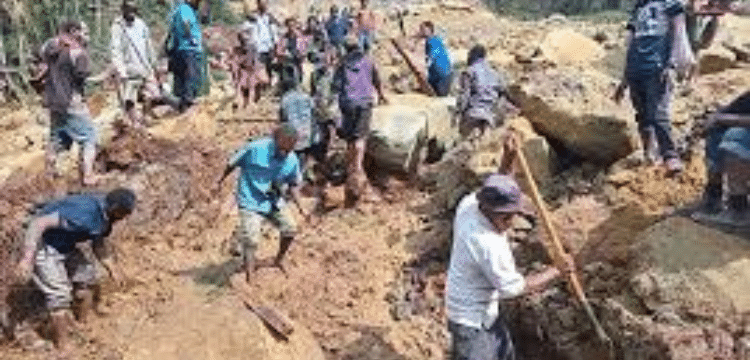A devastating landslide has struck Papua New Guinea (PNG), with reports suggesting that more than 2,000 individuals may be trapped under the debris, according to government information conveyed to the United Nations. Intense overnight rains in Enga province have heightened concerns about the stability of the rubble, complicating rescue efforts. Emergency teams are present at the scene, but the arrival of crucial heavy machinery has been delayed due to impassable roads, leaving helicopters as the sole means of access.
Despite the challenging circumstances, only six bodies have been recovered since the landslide occurred on Friday. The UN has cautioned that the death toll could significantly increase as rescue operations continue in the coming days. In a remarkable development on Monday, two residents, Johnson and Jacklyn Yandam, were rescued after their cries for help were heard. They expressed profound gratitude, describing their survival as miraculous.
Read more: Pakistan Army Rescues People Stuck On Karakoram Highway
However, hopes for locating additional survivors are fading. A letter from the PNG National Disaster Centre to the UN reported that the landslide had “entombed over 2,000 people alive and caused extensive destruction.” The latest update from the UN highlighted that PNG officials are focusing on debris clearance and enhancing access to the affected area. They are also aiding local authorities with evacuations and the distribution of essential supplies.
In Wabag, the provincial capital situated 60km from the impacted villages, heavy rainfall persisted for two hours overnight. Communication remains limited in the disaster zone, and adverse weather conditions continue to pose significant risks.
Serhan Aktoprak, chief of the UN’s International Organization for Migration mission in PNG, expressed concerns about water seepage between the debris, heightening the risk of additional landslides.











